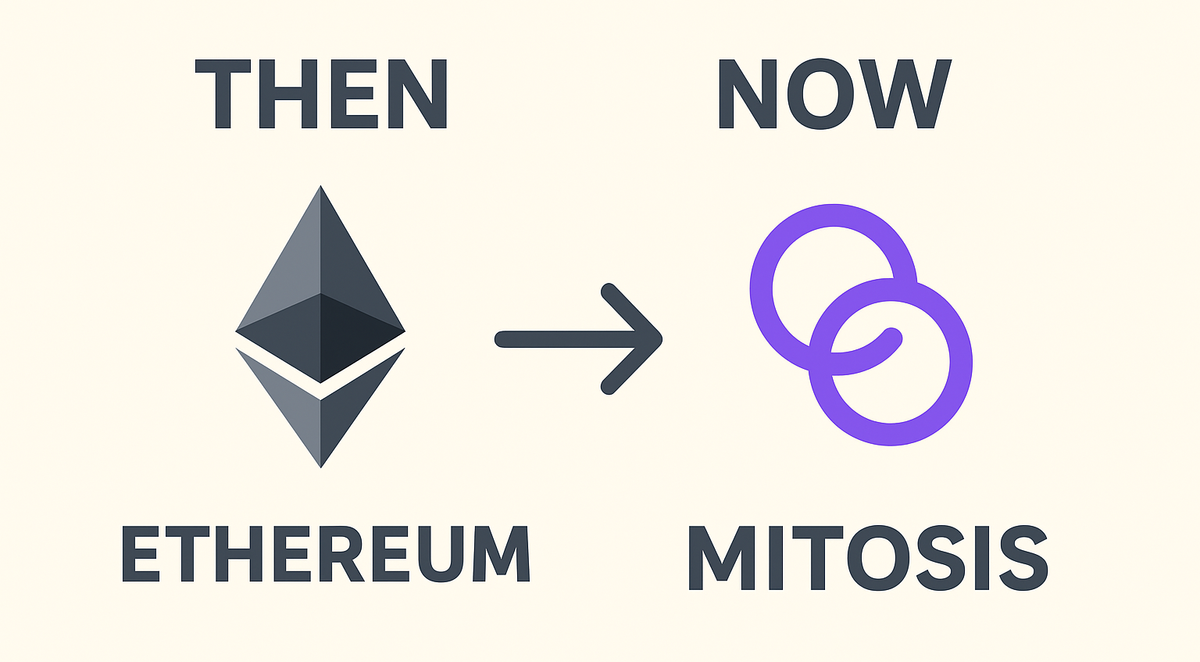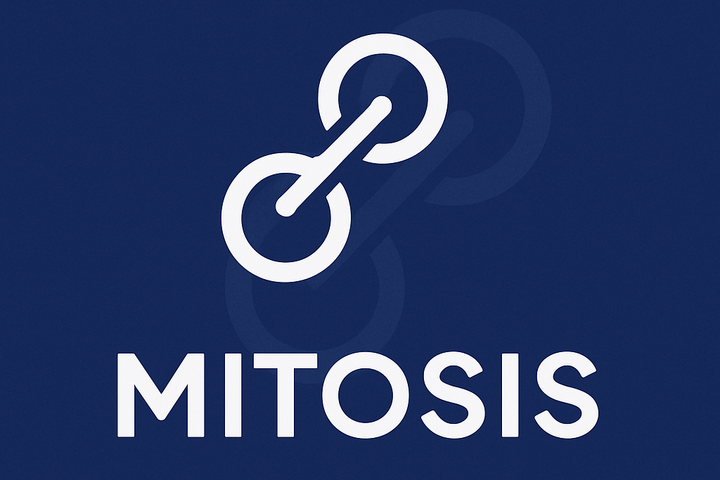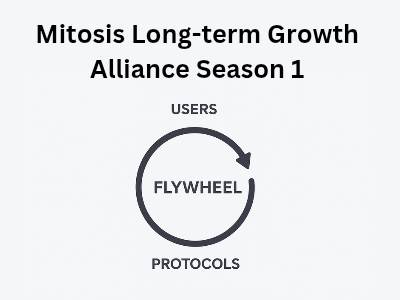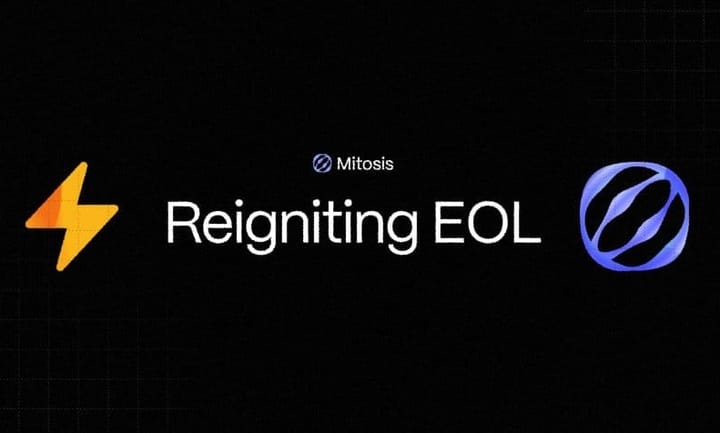If You Missed Ethereum Early, Don’t Miss Mitosis Now

Introduction: A Familiar Feeling of “If Only…”
If you’ve been around crypto for a while, you’ve probably heard someone say:
“If only I had bought Ethereum back when it was $10.”
Or maybe you’ve said it yourself.
It’s one of the most common regrets in the crypto world. Back in 2015, Ethereum was just another experimental blockchain. People dismissed it as “too complicated” or “too risky.” Yet today, Ethereum is the second-largest cryptocurrency, powering thousands of apps, billions of dollars in value, and entire industries like DeFi and NFTs.
The truth is, most people didn’t see Ethereum’s potential early enough. They didn’t understand what programmable money and smart contracts would become. They underestimated the need for a platform that allowed developers to build decentralized apps on top of blockchain.
Fast forward to today, and Ethereum is no longer a hidden gem, it’s mainstream. That means the life-changing opportunities are much harder to catch.
But here’s the exciting part: another project is quietly emerging with the same kind of “early Ethereum” energy. It’s called Mitosis, and it’s solving one of the biggest problems in crypto today cross-chain liquidity.
If Ethereum was about programmable money, Mitosis is about programmable liquidity. And just like Ethereum in its early days, most people don’t yet realize how big this can become.
Ethereum in the Early Days: A Quick Throwback
To understand why Mitosis could be the “next Ethereum-level opportunity,” let’s take a step back.
Back in 2015, Bitcoin was already popular. It was seen as “digital gold,” a way to store value outside of banks and governments. But Ethereum introduced something new: smart contracts.
Imagine Bitcoin as a calculator, you press buttons and get results. Ethereum was more like a full computer, you could program it to run anything you wanted, from games to finance apps to marketplaces.
At first, very few people understood why this mattered. Who would need a “world computer”? Why complicate things when Bitcoin already existed?
But then, developers started building:
- DeFi apps like Uniswap, Aave, and Compound.
- NFTs that gave us unique digital art and collectibles.
- DAOs where communities govern themselves on-chain.
Ethereum unlocked an entire new internet, Web3.
And here’s the lesson: the biggest opportunities in crypto usually look like “solutions to a niche problem” before they become obvious to everyone.
That’s exactly where Mitosis is right now.
The Big Problem Mitosis Solves
Ethereum solved programmable money.
But crypto has grown since then, and now we face a new problem: fragmentation.
There are dozens of blockchains like Ethereum, Solana, Avalanche, Polygon, Cosmos, and more. Each has its own strengths, apps, and users. But they don’t naturally “talk” to each other.
It’s like if the internet had 50 separate networks that didn’t connect. Imagine having to log in to one internet just to use Gmail, another for YouTube, and another for Twitter. Chaos, right?
That’s what crypto feels like today. Users juggle multiple wallets, bridges, and tokens just to do simple things:
- Want to move USDC from Ethereum to Solana? You need a bridge.
- Want to swap tokens across chains? You need an aggregator.
- Want to provide liquidity to DeFi apps across multiple ecosystems? Good luck, you’ll be juggling dashboards and paying fees everywhere.
This mess is one of the biggest barriers stopping crypto from reaching mainstream adoption.
And that’s where Mitosis comes in.
What Is Mitosis, in Simple Words?
Mitosis is building a cross-chain liquidity engine.
That’s a fancy way of saying:
- It makes your assets move and work across different blockchains seamlessly.
- It turns liquidity into something programmable, just like Ethereum turned money into something programmable.
- It allows builders to plug into a single liquidity layer instead of struggling with dozens of separate ones.
Think of it like this:
👉 Ethereum gave us the “app store” for crypto. Developers could finally build apps on-chain.
👉 Mitosis is building the “plumbing” that connects all chains together. It’s the invisible engine that powers liquidity everywhere.
With Mitosis, you won’t need to juggle 10 wallets, 5 bridges, and 3 aggregators. You’ll just interact with one engine that handles it all behind the scenes.
Relatable Example: Traveling With Different Currencies
Let’s say you’re traveling through Europe.
- In France, you use euros.
- In Switzerland, you use Swiss francs.
- In the UK, you use pounds.
Every time you cross a border, you have to visit an exchange booth, swap money, and lose a little to fees. Annoying, right?
Now imagine if there was a card that automatically converted your money into whatever local currency you needed, instantly, at the best rate, without you lifting a finger.
That’s exactly what Mitosis does for crypto. Instead of you worrying about “which chain” or “which token,” Mitosis makes liquidity borderless.
Why This Feels Like Early Ethereum
Now here’s the key part:
Most people don’t yet realize how massive cross-chain liquidity will be. Just like in 2015, most people didn’t realize how big smart contracts would be.
Ethereum back then was “just a weird blockchain with apps.” Mitosis today is “just a liquidity protocol.”
But let’s zoom out:
- Ethereum enabled DeFi.
- Mitosis will connect DeFi across all chains.
- Ethereum made money programmable.
- Mitosis makes liquidity programmable.
History doesn’t repeat, but it rhymes.
The Builders’ Perspective: Why Mitosis Matters
For builders, Mitosis is like having one giant liquidity pool they can plug into.
Imagine you’re building a DeFi app. Normally, you’d have to:
- Integrate with Ethereum liquidity.
- Integrate with Solana liquidity.
- Integrate with Avalanche liquidity.
- Hope your users know how to move funds around.
But with Mitosis, you just plug into one layer. The engine handles the rest.
It’s like when Stripe came along for payments, suddenly, every startup could accept credit cards without building their own payment rails. That’s what Mitosis is doing for liquidity.
Relatable Example: Streaming Platforms
Think about how Netflix changed entertainment.
Before streaming, you had to buy DVDs or hope your local store had the movie. Different countries had different formats, different players, and it was messy.
Netflix solved this by creating one platform where you could access everything instantly.
Mitosis is like the “Netflix of liquidity.” No more juggling tokens and chains, it just works.
Why the Timing Is Perfect
Opportunities in crypto aren’t just about the tech, they’re also about timing.
Ethereum hit at the right moment, when developers were hungry for more than Bitcoin could offer.
Mitosis is launching at the right moment too:
- DeFi is big but fragmented.
- Users are tired of bridges, hacks, and complicated tools.
- Builders need a unified liquidity layer.
The demand is real, but the solution isn’t widespread yet. That’s exactly the kind of setup that creates “Ethereum-like” opportunities.
What Happens If Mitosis Wins?
If Mitosis succeeds, here’s what the future could look like:
- You open a crypto app, deposit funds, and don’t even know which chain they’re on.
- A game on Solana can easily use liquidity from Ethereum.
- A lending protocol on Avalanche can tap into stablecoins from Polygon.
- Users stop thinking about “bridges” altogether, liquidity just flows.
In short: Mitosis could become the invisible engine powering the entire crypto economy.
That’s the kind of fundamental shift Ethereum brought and it’s why early believers in Mitosis could be sitting on something huge.
Relatable Example: Electricity Grids
When electricity was first invented, cities had their own separate power systems. You couldn’t just plug your device in anywhere, you needed to know the local setup.
Eventually, we built interconnected grids. Now, electricity just works. You don’t ask, “Is this from solar or hydro or coal?” You just plug in.
Mitosis is building that “grid” for liquidity. Soon, you won’t ask, “Is this Ethereum liquidity or Solana liquidity?” You’ll just plug into Mitosis and it works.
Closing the Loop: Don’t Miss This Moment
If you missed buying Ethereum early, you know how that story played out. At first, it looked small and niche. But it ended up shaping the entire industry.
Mitosis is at that same stage now. Still early, still misunderstood, but solving a problem so fundamental that it could become the backbone of the next era of crypto.
The question is: will you recognize the moment this time?
Because in a few years, people might be saying:
“If only I had gotten into Mitosis early, like Ethereum.”
And you’ll want to be the one smiling, knowing you didn’t miss it twice.
Final Thoughts
- Ethereum showed us that programmability unlocks revolutions.
- Mitosis is showing us that programmable liquidity is the next frontier.
- Early opportunities don’t come with flashing lights, they come disguised as “solutions to niche problems.”
So if you’ve ever kicked yourself for missing Ethereum at $10… don’t repeat that mistake.
The next chapter of crypto is being written right now. And Mitosis might just be the secret engine powering it.



Comments ()